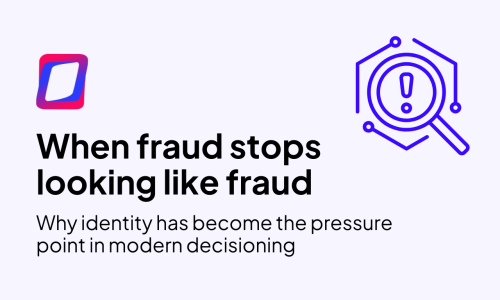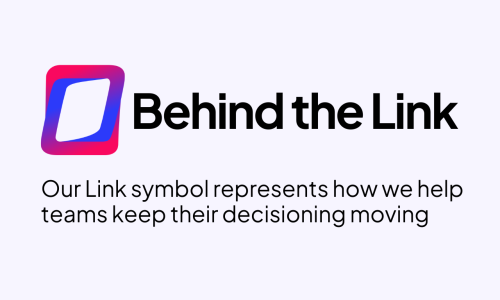Credit Risk Management Process, Best Practices & Techniques
Overview of Risk Management in Banking
A strong credit risk management process is essential for banks and lenders to minimize risks while maximizing profits and productivity. Understanding the best practices and techniques involved in credit risk management is the first step in crafting an effective risk assessment solution
PRNewswire says that 76% of traditional banks fear new fintech platforms; however, implementing a credit risk management strategy can increase lenders’ financial security and provide borrowers with loans they can handle to build their credit. Understanding the credit risk management process, best practices, and techniques is the first step in crafting a risk assessment solution.
What is the credit risk management process?
When a borrower applies for a loan, the lender must evaluate their reliability to make future monthly payments. Beyond requests for information on a borrower’s current financial situation and income, many lenders will also want to see their borrowing and payment history.
Inc. Magazine described this as a borrower’s creditworthiness. It’s a deep look at past behaviors and current debts to determine how likely a borrower is to maintain a new loan. In addition to this personal information, lenders will consider the size of the requested loan and the commitment length.
Combined, these factors paint a picture of the borrower that helps lenders understand the risk level of a loan. While this has long been the traditional credit risk management process, it fails to acknowledge additional internal and external factors that could affect the risk of a loan.
Why is credit risk management important?
Risks are inevitable in banking operations, but that doesn’t mean they can’t be mitigated. Commercial banks and private lenders are constantly making efforts to reduce the risk of fraud and cybersecurity threats to protect the financial information of their clients. Still, they also need to protect their treasury from unreliable borrowers.
In the credit risk management process, when a borrower misses a monthly payment or defaults on a loan altogether, the lending party is at a loss. Even if the collateral is taken, the time and money spent to turn it into funds can leave the lender with a negative return. That’s why it’s incredibly important for financial institutions to evaluate each borrower’s credit risk thoroughly and, as you will see, their reserves and environmental factors before signing off on a loan.
Learn more about GDS Link’s credit risk management software solutions.
Best Practices for Managing Credit Risks
According to The Risk Management Association, the first step to mitigate the probability of default begins with understanding the borrower. A common approach is to evaluate them by the “Five Cs of Credit” to obtain a profile of their financial risks. The five Cs of credit is character, capacity, capital, collateral, and conditions. This assessment runs on the belief that past payment performance (as well as current finances) can indicate a borrower’s future actions.
A borrower’s background is only one part of credit risk management. To help your institution operate with less risk and more profit, here are some of the best credit risk management techniques in banks:
- Constantly evaluate your data sources. Is your model using the best data when decisioning? New data sources are constantly emerging, be on the lookout for those that can enhance your portfolio.
- Validate your scorecard model consistently. An independent, third-party auditor can evaluate your model to identify and eliminate weaknesses, helping you maximize the effectiveness of your credit rules.
- Proactively monitor your model. Scorecard models naturally degrade as markets change, which is why it’s vital to use third-party resources to measure the degradation of your model.
- Leverage dynamic data. Rather than relying on month-old credit scores, use current bank transaction data to identify any pre-delinquency issues and re-marketing opportunities.
- Take advantage of artificial intelligence and machine learning. Then, you can conduct champion-challenger experiments to compare traditional scorecard models against those created with newer technologies.
- Prepare for financial crimes. During uncertain economic times, financial crimes such as fraud tend to increase. Make sure you’re using the best tools and data to fight fraud on all fronts.
- Use today’s top software. Decisioning tools like GDS Link manage the entire borrower lifecycle, helping you assess risk, protect your portfolio, and approve only the best applicants.
Effective Methods for Managing Credit Risks
One such method is risk-based pricing. As Wall Street Mojo explained, this is when lenders charge a higher interest rate to a borrower deemed of moderate risk. This is ideal for banks or lenders with a large loan reserve, so they have capital available in the event of a default. By continuously monitoring these relatively risky loans, lenders can proactively request payment or change the terms to reduce hazards.
Lenders can also request periodic MIS reporting to manage credit risks. In this scenario, the borrower will be asked to periodically submit pre-determined financial statements to the lender. This allows the bank to monitor the borrower’s current financial status and ability to pay their loan.
Advantages & disadvantages of credit risk management
When lenders access the borrower’s most recent, precise data and internal resources, they receive a comprehensive analysis of the loan in question.
Continuously monitoring these factors helps commercial banks and private lenders be proactive in how they need to interact with a borrower or manage their reserves. An adaptive risk management system can help lenders prioritize their loan offerings and target products and services to existing borrowers to expand their portfolio without marketing to new customers.
As beneficial as a strong credit risk management system can be, it doesn’t come without its challenges. Financial institutions should be aware of the factors that can limit the effectiveness of these programs, including:
Inefficient data management –
your information is only as valuable as it is relevant. Data storage solutions should be secure, organized, and updated in real-time.
Limited infrastructure –
robust stress cycling that spans the entire credit life cycle ensures an accurate risk assessment.
Poor reporting and visualization –
data should be organized to identify a loan’s strengths and weaknesses without being weighed down by irrelevant information.
How Do Banks Manage Credit Risk
A lender’s risk model is one of the most influential factors when managing credit risk. Credit risk modeling refers to using data models to determine the likelihood a borrower will default on a loan and if they do, what impact a default could have on the lender. Many financial institutions employ risk models to assess the creditworthiness of potential borrowers. The most current models use big data and advanced analytics programs to help banks determine whether or not to approve a loan and what interest rates are appropriate.
GDS Link’s credit risk solutions for banks have been developed with these best practices and techniques in mind.
Contact us today to learn how we can add value and security to your operations.
Credit Risk Management FAQs
What is the Purpose of the Credit Risk Management Process in Banks?
Banks’ credit risk management process aims to ensure that the bank’s lending activities are consistent with its risk appetite and to manage credit risk exposure effectively and efficiently. The credit risk management process involves activities that enable banks to assess, monitor, and manage credit risk while ensuring that lending decisions are consistent with the bank’s strategic objectives.
How Does a Bank Assess the Credit Risk of a Borrower?
To assess a borrower’s credit risk, banks typically evaluate various factors that can impact the borrower’s ability to repay a loan. These factors may include the borrower’s credit history, income, employment history, debt-to-income ratio, and other financial obligations. Banks may also consider factors such as the purpose of the loan, the collateral provided, and the borrower’s character and reputation.
What are the Key Components of the Credit Risk Management Process in Banks?
The key components of the credit risk management process in banks typically include:
Credit risk identification:
Identifying and evaluating the different types of credit risk the bank is exposed to, including the borrower, industry, and systemic risks.
Credit risk assessment:
Evaluating borrowers’ creditworthiness and determining the risk level associated with each loan application.
Credit risk monitoring:
Ongoing monitoring of borrowers’ creditworthiness, including financial condition changes, ensures that the bank’s credit risk exposure remains acceptable.
Credit risk mitigation:
Implementing strategies to manage credit risk exposure, including diversification of the loan portfolio, collateral requirements, and loan loss provisions.
How Does a Bank Monitor and Manage its Credit Risk Exposure Over Time?
Banks typically monitor and manage their credit risk exposure over time by regularly reviewing their loan portfolio, assessing changes in borrower creditworthiness, and adjusting their risk management strategies as needed. Banks may also use stress testing and scenario analysis to evaluate the potential impact of changes in economic conditions on their credit risk exposure.
What are the Different Types of Credit Risk, and How are They Managed in a Bank?
The different types of credit risk include borrower, industry, and systemic risks. Borrower risk refers to the risk that a borrower will default on a loan, while industry risk refers to the risk that the performance of a particular industry will decline. Systemic risk refers to the risk that a disruption in the broader economy will impact the bank’s credit risk exposure. These types of credit risk are managed in a bank through various strategies, including diversification of the loan portfolio, use of collateral, and loan loss provisions.
How Does a Bank Balance the Need for Lending with the Need to Manage Credit Risk?
Banks balance the need for lending with the need to manage credit risk by establishing risk appetite and risk tolerance levels and by implementing risk management strategies that align with these objectives. Banks may also prioritize lending to certain types of borrowers or industries based on their risk profile and adjust their lending practices over time in response to economic conditions.
How Does a Bank’s Credit Risk Management Process Adapt to Changes in the Economic Environment?
A bank’s credit risk management process may need to adapt to changes in the economic environment to ensure that the bank’s credit risk exposure remains within acceptable levels. This may involve adjustments to risk management strategies, changes to lending practices, or the development of new risk management tools or techniques.
What are the Benefits of a Strong Credit Risk Management Process for Banks?
A strong credit risk management process can help banks to reduce the risk of loan losses, improve the accuracy of lending decisions, and ensure that lending practices are aligned with the bank’s strategic objectives. It can also help reduce the bank’s overall risk profile, improving its financial stability and reputation.
How Does Technology Play a Role in a Bank’s Credit Risk Management Process?
Technology is increasingly important in a bank’s credit risk management process. Banks may use technology to automate credit risk assessment processes, perform data analytics and modeling, and monitor credit risk exposure in real-time. Technology can also help banks to improve the accuracy and timeliness of credit risk reporting and enable them to respond more quickly to changes in credit risk exposure.
What are the Potential Challenges and Limitations of a Bank’s Credit Risk Management Process?
Several potential challenges and limitations are associated with a bank’s credit risk management process. These may include:
Overreliance on historical data:
Banks may rely too heavily on historical data to assess credit risk, which may not accurately reflect current or future conditions.
Incomplete data:
Banks may not have access to all the information needed to accurately assess credit risk, particularly for new or emerging industries or businesses.
Human error:
Errors in credit risk assessment can occur due to human biases or judgment errors, leading to inaccurate lending decisions.
Regulatory requirements:
Banks must comply with various regulatory requirements related to credit risk management, which can be complex and time-consuming.
In conclusion,
Credit risk management is a critical function for banks that enables them to manage their lending activities consistent with their strategic objectives and risk tolerance. By assessing, monitoring, and managing credit risk effectively, banks can reduce the risk of loan losses and improve their financial stability over the long term. The use of technology and data analytics can help banks to improve the accuracy and efficiency of their credit risk management processes while also enabling them to adapt more quickly to changes in the economic environment.
Related Risk Management Articles
- Benefits & Risks of Mobile Banking
- Risk Management & Data Analytics for Small Businesses
- Credit Risk Evaluation Process
- Top 4 Major Challenges of Credit Risk Management in Banks
- Credit Risk Scorecard Model Development, Monitoring & Reporting
- Risk Analytics Foundational to Broad Financial Services Innovation
- What Are The Different Types of Credit Risk
- Why Credit Risk Management is Important for Credit Unions
- Credit Risk Management Platform
Recent articles

When Fraud Stops Looking Like Fraud
Read article
Behind the Link
Read article





